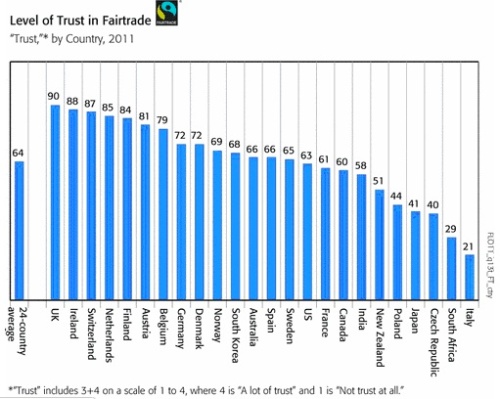Many of us actively involved in the fair trade movement are aware of the recent news surrounding Fair Trade USA‘s decision to resign from Fair Trade International (FLO). There has been a LOT of talk, formal statements, and frustration around the news and you can find out more details about what this decision will mean for the movement as a whole here.
What concerns me right now is that there is already a TON of confusion about certification at the consumer level. Is the item certified fair trade? Is it not? If it’s not, why not (in some cases, products like our jewelry aren’t “certifiable” in the United States, for example, because there isn’t an organization that can certify it – our best option is to be a member of the Fair Trade Federation which we are and have been for more than 8 years).
According to Fair Trade International (FLO), the Fair Trade International Logo is the most widely recognized ethical label globally. Although the United States still lags plenty behind its neighbor across the pond, the United Kingdom, it’s still at 34% (the U.K. enjoys a 96% recognition rate). Additionally, and MORE IMPORTANTLY, the TRUST level when you see the logo in the U.S. is at 63% and 90% in the U.K. You can see the stats in these graphs or in this link.
So imagine my shock when I learned that Fair Trade USA, the same organization that allowed AVON to use its logo when the company was only using 2% of its raw materials on a product to use the logo, could allow a company like Hershey’s to use its fair trade logo without ANY fair trade cacao being used. That’s right. All Hershey’s needs to do is use 11% of its raw materials as fair trade and it will be granted use of the Fair Trade USA logo. That 11% could be fair trade sugar (which would be a start) but what I find more disturbing is a company could easily claim to be fair trade when it’s most basic, raw material isn’t even fair trade. This is unreal. This graphic is from Fair World Project’s blog.
Want to learn more? The Fair Trade Resource Network is hosting three webinar’s tomorrow and I strongly encourage you to stay abreast on what is going on. If you’d like to register for the webinar scheduled for tomorrow, click here.
I’m curious to hear what you think about this issue facing the fair trade movement nationally and internationally. Do you feel like you know what is happening? What are retailers supposed to say to consumers when they ask why a product in their shop is fair trade and a company like Hershey’s is fair trade? What are we, as importers and wholesalers of fair trade products from developing countries, supposed to tell our retailers WHY we are fair trade and companies like AVON are touting their fair trade certification?
~Megy


